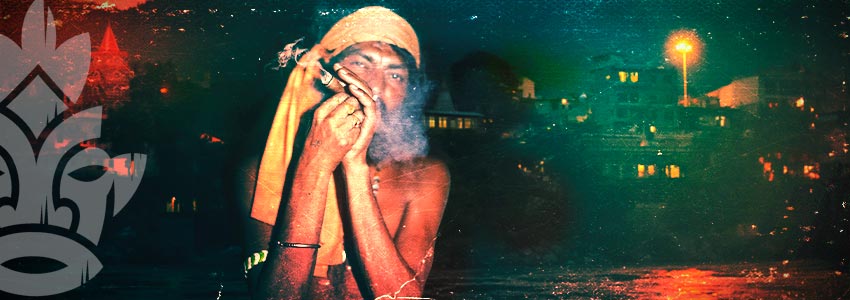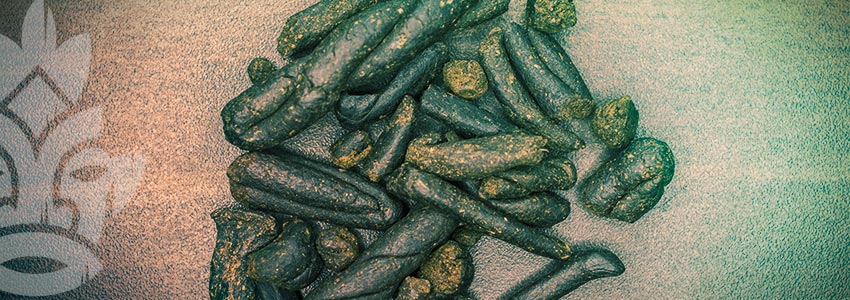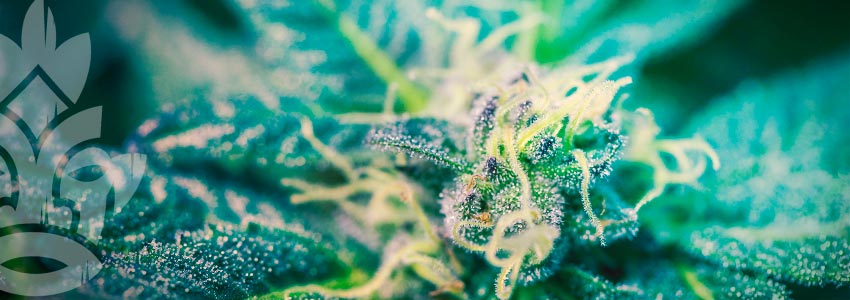Don't have an account?
Register NowYou have to add to cart at least 5 bottles or any program to make checkout.
- BlogCharas: What Is It And How To Make It
Charas: What Is It And How To Make It
Published: February 20th, 2020
Categories:
Cannabis Info • How To
Cannabis concentrates might seem like a new invention. Sure, live resin and shatter aren’t possible without modern technology, but certain cultures have used older forms for thousands of years. Charas is an ancient cannabis concentrate capable of producing a powerful, almost psychedelic high.
Let’s take a look at precisely what charas is, its rich history, and how to make it.
WHAT IS CHARAS?
Charas is essentially a homogeneous mass of trichomes and cannabis resin. It’s a form of hashish that's handmade in regions such as India, Pakistan, Nepal, and Jamaica. The original charas was made using landrace specimens found growing in their natural environment along the foothills of the Himalayas.
Charas is one of the purest ways to make concentrated cannabis. There’s no complicated extraction, chemicals, or tools involved. It’s created simply by placing buds between the hands and rubbing them together. It shares a similar consistency and method of preparation to hash, but what sets it apart is timing. Charas making uses fresh flowers, as opposed to the dried flowers used for making hash.
Charas can be made using any cannabis cultivar, but the most prized charas stems from landrace varieties in Northern India, particularly the Parvati Valley, Malana, and Kashmir regions. Some of the most popular, THC-laden forms of charas stemming from these areas include Malana Cream and Kerala Gold.
The charas in these regions is of such high quality thanks to the landraces found growing there. The cannabis is said to be of high potency, and has attracted enthusiasts from all over the world. Backpackers have dedicated entire journeys in search of these plants, and strain hunters have used the genetics to create world-renowned hybrids.
THE HISTORY OF CHARAS

Charas has a rich and extensive history. Along with hash, religious devotees in India have used charas for thousands of years. Cannabis has played a significant role in the spiritual and mythological history of the country. Sacred Hindu texts—The Vedas—mentioned the herb as far back as 2000 BCE.
Cannabis is revered as one of the five sacred plants, and recognised as a liberator and source of happiness. The herb plays an integral role in certain sects of the Hindu religion, particularly for the Shaivites—a group that worships Shiva.
Also known as the destroyer, Shiva is heavily associated with cannabis. Shaivites are known to drink a mixture of milk and cannabis known as bhang. They also commonly inhale charas through a piece of smoking apparatus known as a chillum.
Although charas is a religious sacrament within India, it hasn’t escaped the global assault on psychoactive substances. Under international pressure, the authorities banned the preparation and distribution of charas. Possession of 1kg of charas can result in a 6-month prison sentence and a fine.
Despite the laws, Hindu monks—known as Sadhus—smoke charas freely as part of their religious practice. Charas is still widespread throughout India, and large quantities are still trafficked into Europe.
HOW TO MAKE CHARAS
You don’t need landrace flowers from the foothills of the Himalayas to make charas. Although, you can grow cultivars with similar genetics if you desire! All you need are a few productive plants to make your supply at home.
WHY SOME STRAINS ARE BETTER FOR MAKING CHARAS
There are hundreds of established cannabis cultivars for growers to choose from. They differ in many ways, from potency and productivity to taste and aroma. You can influence the properties of your charas by carefully selecting different traits.
To achieve the best outcome, it’s best to choose extra sticky cultivars that produce high volumes of resin. Good options include White Widow, Lemon Shining Silver Haze, and Royal Gorilla.
Now that you’re aware of which strains perform best when it comes to making charas, it’s time to learn how to make your own.
THE PROCESS

1. During the later flowering stage (around 2–3 weeks before harvest) pick several large buds from one of your plants. Before touching them, be sure to thoroughly wash and dry your hands.
2. Use your trimmers to manicure the flowers. Trim away the sugar leaves, leaving behind a bulbous bud. Don’t throw away your trim! You can use it to make hash, cannabutter, and other extracts.
3. Take a few buds, or one large one, and begin to rub them between your hands slowly. As you apply pressure and motion, the resin will start to ooze from the flowers and stick to the palms of your hands.
4. As more resin is released, increase the pressure and speed of your hand movements. The resin will begin to build up and form a tar-like substance on your hands. Avoid the temptation to go too fast and rush, as this can cause a loss of resin.
5. Keeping rolling the buds until they appear to stop oozing. Use a thumb to press the flowers into the opposing hand to salvage what’s left.
6. Drop the flowers into a collection tray and begin rubbing your hands together. The resin will start to form a charas ball. Repeat the process until you have a substantial ball of charas.
THE BEST WAYS TO USE CHARAS
As a form of hash, charas can be added to joints and blunts for an extra touch of potency. Tear small pieces from the charas ball and roll them up into small “snakes” before adding them to cones.
You can also savour the flavour and burn it up in bongs, pipes, and compatible vapes. It’s advised to mix it with some tobacco to help it burn. Alternatively, you can smoke charas traditionally, that is, through a chillum.
A chillum is a straight conical smoking pipe commonly used to smoke charas. The size and shape of this smoking apparatus quickly cools the smoke, resulting in buttery smooth hits.
Before using your chillum, gather around 0.5–1.5g of charas. Crumble it up and mix with a small amount of rolling tobacco. Place the mix in the bowl of the chillum.
Cover the mouthpiece with a moist cloth and position the chillum so the bowl is facing upward. Heat up the charas mix and inhale!







